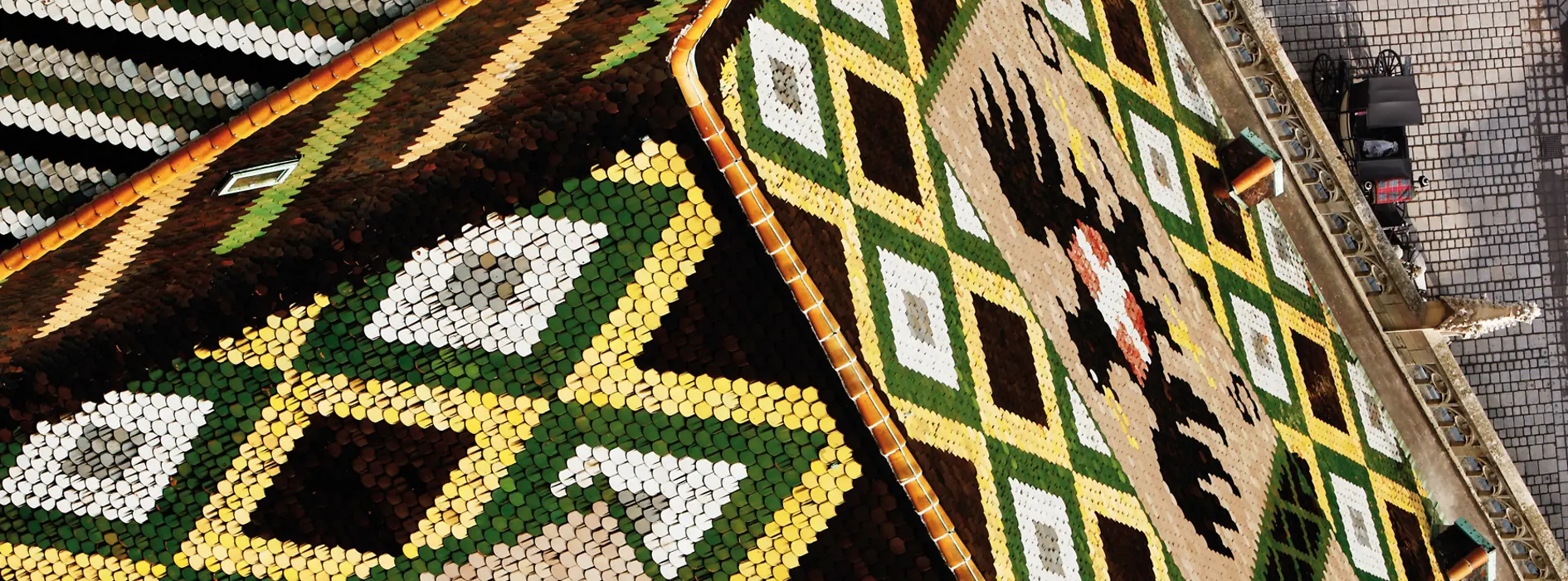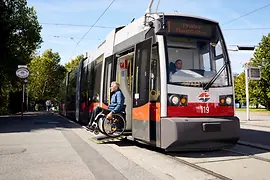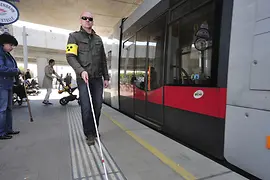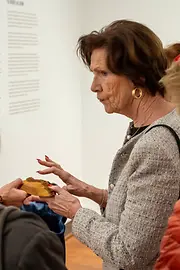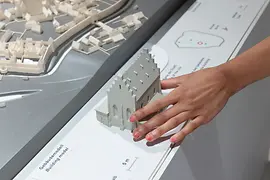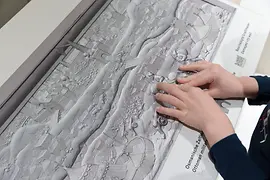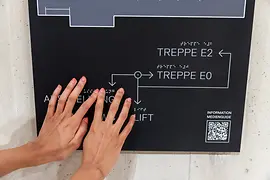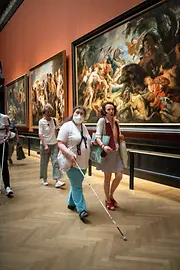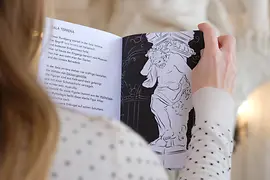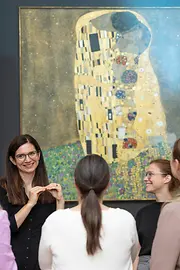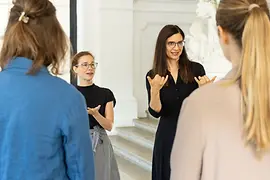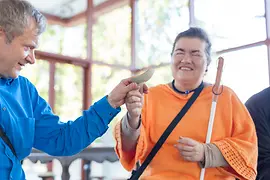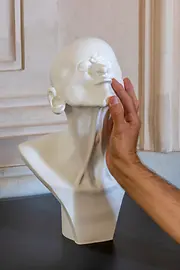Vienna Press Release – September 2024 Inclusive Vienna: new video initiative showcases mobility, art and culture from an accessible perspective
Social inclusion has become a widely used term. In order to make every aspect of a city accessible to people with physical disabilities, cities need to pay attention to accessibility. Vienna has been steadily expanding its public infrastructure for years. An increasing number of museums are also making the necessary adjustments to ensure that visitors can enjoy culture without restrictions.
New social media format: Vienna through the eyes of a wheelchair user
The Vienna Tourist Board has launched an innovative social media format that accompanies young wheelchair user Nico Langmann on a journey through Vienna in its first episode. Nico Langmann is one of Austria’s most successful wheelchair tennis players. He has been paraplegic since an accident at the age of two. Despite this obstacle, he has been able to forge an impressive career in wheelchair tennis. His most recent successes include winning the Austrian national championships at the beginning of July 2024.
This new video production for the Instagram channel www.instagram.com/vienna shows Vienna from a new perspective and focuses on the accessibility and inclusion opportunities that can be found in the city.
In the video, Nico Langmann guides viewers through various districts, museums and public places and reveals just how accessible the city is. He visits the Albertina modern: the artworks inside are made accessible by several platforms and lifts. The Neni am Prater on the top floor of the building, where the Hotel Superbude is also located, was also found to be easily accessible. The video is not only intended to appeal to people with limited mobility, but also to raise awareness of accessibility.
Display alternative text
Video Nico Langmann
The collaboration with Nico Langmann is the first in a series of videos that will present Vienna from the perspective of people with disabilities.
Barrier-free and mobile: Wiener Linien
Wiener Linien promotes accessibility on public transport through a range of measures: for instance, every subway station and most streetcar and bus stops are barrier-free. Ramps, elevators and raised pavements compensate for differences in height before boarding the vehicle. Automatic folding ramps in new subway trains (V-trains) make it easier for wheelchair users and people with baby carriages to board. Low-floor vehicles on streetcars (ULF, Flexity) and buses improve accessibility. Electronic display panels indicate which vehicles are barrier-free. Accessible websites and the POPTIS navigation system help visually impaired passengers. Ticket machines have been adapted. Companions and assistance dogs travel free of charge. A color coding system and tactile guidance aids in subway stations help passengers with visual impairments to find their way around.
https://www.wienerlinien.at/barrierefreiheit
Accessible art
Many museums have accessible art and cultural offerings. This refers not only to wheelchair-accessible design and equipment, but also to information in sign language, alternatives for visually impaired and blind visitors and texts in simple language:
- the House of Austrian History, for example, offers accessible guided tours and workshops in simple language on Austrian history from 1918 onwards. Audio guides with inductive hearing systems are also available. Guided tours and workshops can be adapted to suit individual needs and are also aimed at groups learning German. Headphones can be borrowed at the venue. More information and bookings can be made by email or telephone.
- As far as accessibility is concerned, the new Wien Museum is at the cutting edge. Tactile objects, Braille and large print text are used throughout the building and in the exhibitions. Induction loops, wheelchair access and guided tours in sign language and simple language enhance the experience.
- The Kunsthistorisches Museum Vienna offers free inclusive guided tours every Friday: test tours for blind and visually impaired visitors take place every first Friday of the month. Three masterpieces from the Gemäldegalerie’s Renaissance Collection have been transformed into tactile 3D reliefs. High-resolution photographs of Raphael’s “Madonna in the Green”, Albrecht Dürer’s “Mary with Child” and “The Court Jester Gonella” by Jean Fouquet were used as templates for carved reliefs, which give an impression of the composition and numerous details of the paintings. There are guided tours in sign language every second Friday and in simple language every third Friday. Guided tours for people with dementia are offered every fourth Friday of the month.
Museum modernisations
The Belvedere, the Kunsthistorisches Museum Wien (KHM) and the Museum of Natural History Vienna (NHM) are currently being modernized with new barrier-free entrance areas and visitor centers to provide an accessible and inclusive experience for all visitors. These projects are all scheduled for completion in 2028.
The Upper Belvedere is planning an underground and invisible visitor center under the southern forecourt of the palace in order to preserve the integrity of the listed building. The premises will offer around 3,500 square meters of space over three floors for a checkout area, information point, checkrooms and a gift store. Some 1.3 million guests visited the Belvedere in 2023, underscoring the urgent need for the expansion.
Detailed information on accessible offerings can be found on the respective websites of Vienna’s museums. The information is easily accessible and provides a good overview of accessible services.
Accessibility at the Vienna Tourist Board
The Vienna Tourist Board supports visitors in planning accessible stays with a comprehensive range of content. The wien.info website provides detailed information on the accessibility of museums and attractions as well as a list of accessible accommodation. The website itself has also been designed to be barrier-free to ensure unrestricted access. If you have any further questions or need assistance, please contact the Vienna Hotels & Info team by email or phone.
More information: https://www.wien.info/en/travel-info/accessible-vienna
Addresses:
- House of Austrian History: Neue Burg, Heldenplatz, 1010 Wien, https://hdgoe.at/barrierefrei_angebote
- Wien Musuem, Karlsplatz 8, 1040 Wien, https://www.wienmuseum.at/infos_barrierefreiheit
- Kunsthistorisches Museum Wien, Maria-Theresien-Platz, 1010 Wien, https://www.khm.at/erfahren/kunstvermittlung/barrierefreie-angebote/
- Albertina, Albertinaplatz 1, 1010 Wien, https://www.albertina.at/besuch/erreichbarkeit/#section-2, https://www.albertina.at/besuch/programm/fuehrungen-in-gebaerdensprache/
- Albertina modern, Karlsplatz 5, 1010 Wien, https://www.albertina.at/albertina-modern/besuch/erreichbarkeit/#section-1
Contact
Helena Steinhart
Media Relations
+43 1 211 14-364
helena.steinhart@vienna.info
